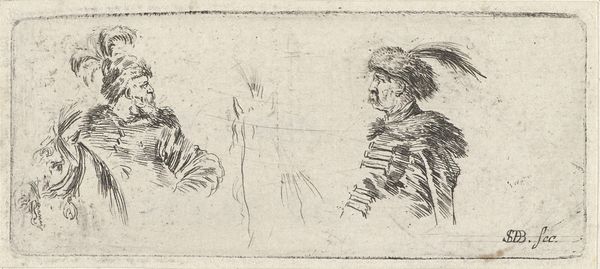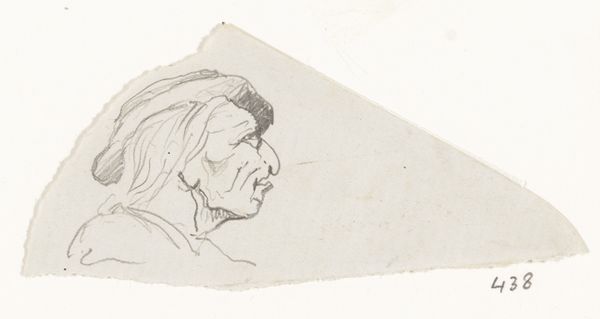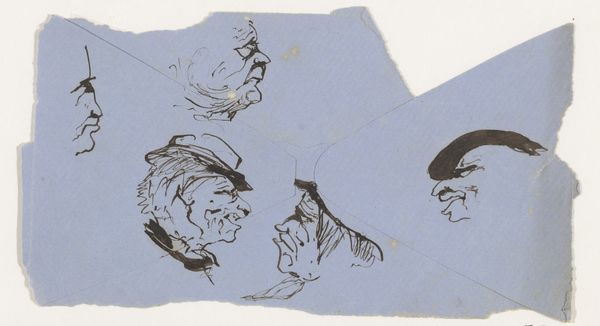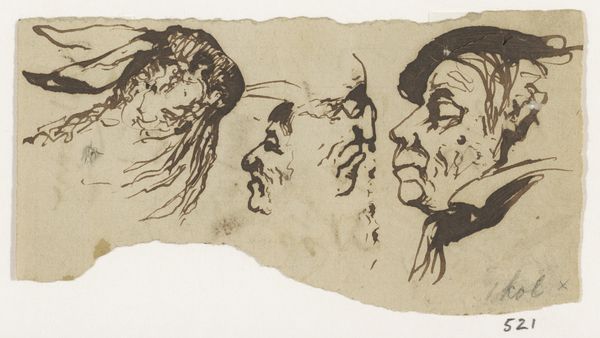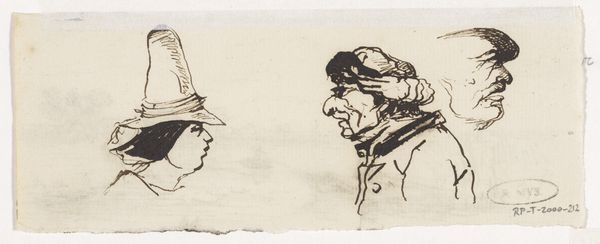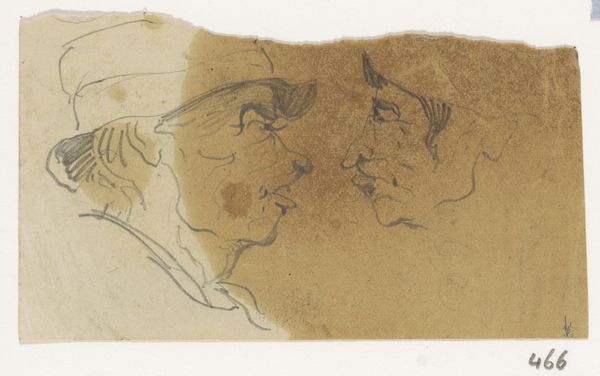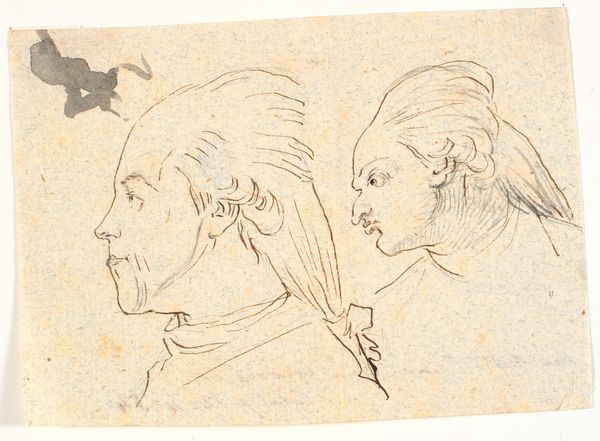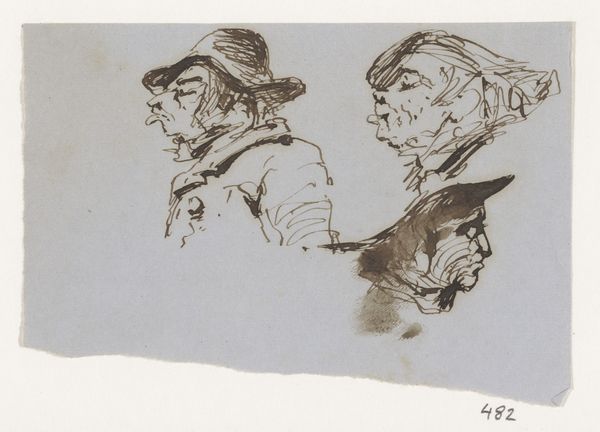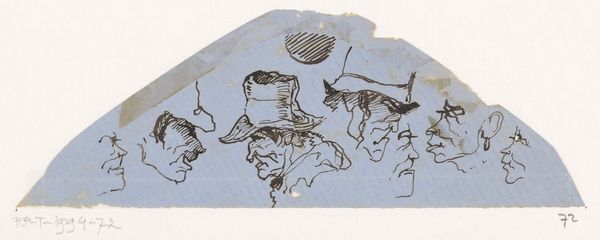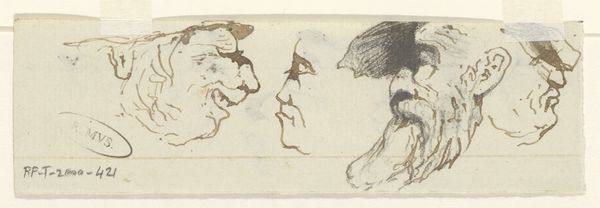
#
ink drawing
#
pen sketch
#
pencil sketch
#
incomplete sketchy
#
personal sketchbook
#
ink drawing experimentation
#
pen-ink sketch
#
sketchbook drawing
#
watercolour illustration
#
sketchbook art
Dimensions: height 65 mm, width 135 mm
Copyright: Rijks Museum: Open Domain
Curator: Here we have "Twee koppen met identieke mutsen" or "Two Heads with Identical Hats," attributed to Johannes Tavenraat and created sometime between 1840 and 1880. What are your initial thoughts on it? Editor: It’s raw. The hurried strokes, the exposed paper… it feels like a glimpse into the artist’s private thoughts on labour and status during that era. There's a certain tension hinted at by the faces and rendering. Curator: Precisely. Consider the lines themselves. They aren't just representational, but constitutive of form. The quick, almost frenetic strokes give the figures a sense of nervous energy, while the identical hats signify the superficial markers of status. This repetitive element emphasizes conformity over individuality, highlighting social expectations. Editor: Yes, but it’s also in the use of ink on paper, right? Pen-and-ink sketches like these would have been part of an entire working process— preparatory drawings, ideas, perhaps a satire of hierarchical systems. It is about a kind of access; a trace of artistic labor and its cultural position, challenging more traditional notions of "high" art. Curator: Indeed. The deliberate roughness challenges conventional portraiture, dismantling classical ideals. The formal asymmetry of the faces draws our attention—as well as the composition’s suggestion of two characters involved in discourse; an interplay of difference amid apparent conformity. Editor: Absolutely. The material of a relatively quick, replicable art form speaks volumes—it makes you question, who are they? Are these military figures or officials, drawn with this rough hand that is reminiscent of how common the abuse of power would be for those in service positions. Curator: It's fascinating how Tavenraat uses such economical means to convey complex socio-political commentary. The essence resides not just in the subject, but also how it's portrayed and how the structural elements are assembled to project that reading. Editor: Ultimately, it speaks to how even quick studies of social stratification can carry substantial material and political weight when unearthed and examined closely. This piece resonates with its straightforward statement on social issues and power. Curator: Well articulated. It is a reminder to contemplate those artistic traces left behind, both by this sketch as well as our own subjective experiences—a powerful reminder indeed!
Comments
No comments
Be the first to comment and join the conversation on the ultimate creative platform.
